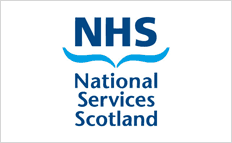Cadmium (Cd)
Workers in various industries - electroplating, welding, smelting and refining, pigment production, and battery manufacturing - may be exposed to cadmium dust or fumes.9 Inhaled cadmium may affect the lungs directly causing emphysema. Cadmium taken into the body, via diet and inhalation, has a very long half-life, accumulating principally in liver and kidney. Long-term exposure can cause renal tubular dysfunction and disturbed calcium metabolism resulting in osteomalacia and osteoporosis. The generally accepted reason for bone effects is that cadmium-induced renal tubular damage decreases calcium reabsorption in the nephron resulting in hypercalciuria and decreased bone mineral density, and hence increased fracture risk. An alternative explanation is inhibition by cadmium of the hydroxylation step in vitamin D synthesis. Cadmium has now also been classified as a carcinogen and is associated with an increased risk of lung and prostate cancer. Tubular kidney damage starts at urinary cadmium concentrations ranging between 0.5 and 2 nmol/mmol creatinine (0.5 and 2 ug/g creatinine) and recent studies focusing on bone effects show increased risk of osteoporosis even at urinary cadmium below 1.0 nmol/mmol creatinine (1 ug/g creatinine). Improved working standards have decreased cadmium pollution both at work and in the environment and so serious local outbreaks of cadmium toxicity such as occurred in Japan in the 1950s and 1960s are now less likely. This endemic exposure resulted from pollution from mining run-off and caused so called Itai Itai disease which led to decalcification of bone, especially in elderly women.
Intestinal absorption of cadmium is between 5% and 8% and increases in iron deficiency states. Cadmium is bio-concentrated in certain foods such as fish, crabs, oysters and shrimps. Absorption via the lungs is much higher (around 30% to 60%) and since tobacco is a significant source of cadmium, smoking is an important contributor to body burden. Cigarette smokers have raised blood and tissue cadmium concentrations.
The half-life of cadmium in blood is about 2.5 months and so its measurement in whole blood is a good indicator of recent cadmium exposure. Its urinary excretion increases with age and urine cadmium is thought to be a useful indicator of body burden. However, workers exposed to cadmium may also have very high concentrations from recent exposure. Cadmium is accumulated in liver until the later decades in life and in kidney until the fourth decade after which it peaks and then starts declining in the sixth decade falling into negative balance. Around half of the body burden is in the liver and kidneys and at age 50 it is present at levels of 15 to 50 mg/kg in kidney. If the renal concentration exceeds 200 mg/kg then risk of kidney damage is considered to be high. The whole body half-life is between 10 and 30 years.
The detection of increased urinary excretion of low molecular mass protein is a recognised way of monitoring for cadmium toxicity and estimation of urinary excretion of alpha-1-macroglobulin, retinol binding protein or microalbuminuria are useful in this respect.
Further Information
Cadmium and You, Health and Safety Executive, Sheffield, UK.
Sample Requirements and Reference Ranges for Cadmium
| Sample Type | Blood, urine (random) |
|---|---|
| Container |
Blood: EDTA or lithium heparin (non-gel). Urine: universal container |
| Precautions |
Blood: Send by first class post to arrive within 72 hours of collection. If delivery to Glasgow will be outwith 72 hours, store whole blood frozen until sending and then send by first class post. Urine: Samples for occupational health monitoring should be taken as random samples at the end of a working shift. |
| Minimum volume |
Blood: 350 μL* Urine: 1 mL |
| Reference ranges |
Blood: < 17 nmol/L10,11,89 Note smokers have higher blood cadmium than non-smokers and suggested reference ranges are as follows90,91: < 7 nmol/L (non smokers) <30 nmol/L (smokers)
|
| Turnaround time |
See this page for STEMDRL TAT targets |
| Method | Inductively coupled plasma mass spectrometry |
| Traceability | Blood and Urine: Traceable to reference material produced in accordance with EN ISO 17511:2003 “In vitro diagnostic medical devices. Measurement of quantities in biological samples. Metrological traceability of values assigned to calibrators and control materials” and reference materials with values determined by reference laboratories. |
| Intermediate Precision (CV) | See this page for latest data |
| Measurement Uncertainty, U | See this page for latest data |
| Analytical Goals (CV) | See this page for latest data |
| EQA Scheme | Blood and urine: UK NEQAS, Guildford (once per month) |
| Included in UKAS scope? |
Blood: No Urine: Yes |
* Absolute minimum volume; this volume is insufficient to carry out repeat analysis if analysis fails.

